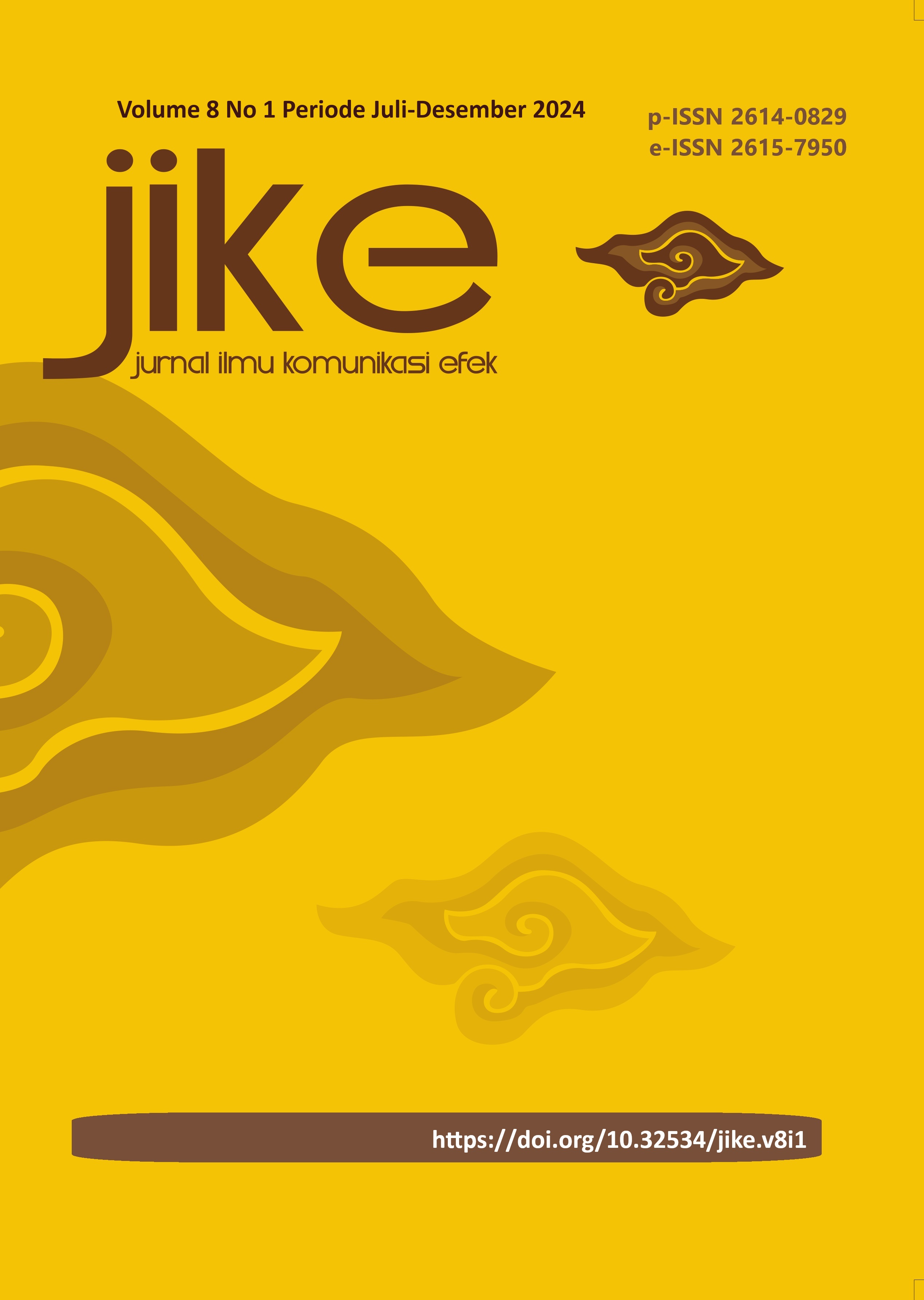The Hubungan Antara Motif dan Kepuasan Menonton Konten Gaming Windah Basudara pada Platform YouTube
DOI:
https://doi.org/10.32534/jike.v8i1.6265Abstrak
This research aims to determine the relationship between uses & gratifications of watching Windah Basudara’s gaming content. Windah Basudara is a content creator who creates gaming content on the YouTube platform. The uniqueness and easily-accepted humor have made Windah a beloved content creator by many YouTube users, resulting in 13.1 million subscribers to the Windah Basudara channel. Each subscriber surely has a motive in watching Windah Basudara's content and seeks satisfaction in the content they watch. Therefore, this study will use the uses & gratification theory by Elihu Katz, which states that motives and satisfaction are always related, and the satisfaction obtained is the satisfaction derived from the desired motives. This study uses a quantitative research method with an explanatory approach and a positivist paradigm using the survey method. The population in this study amounts to 13,130,439 subscribers. The sample selection technique uses non-probability sampling and produces 400 samples using the Slovin formula. Using the new media motives described by Papacharissi & Rubin (2000) consisting of interpersonal utility, passing time, seeking information, convenience, and entertainment, the results of this study show that the correlation coefficient of motives (X) to gratifications (Y) has a Sig. value (2-tailed) of 0.001 < 0.05 and a Pearson Correlation r value of 0.776 > r table 0.098, indicating that motives (X) have a strong relationship with gratifications (Y).
Keywords: Correlation, Motives, Gratifications, Windah Basudara









